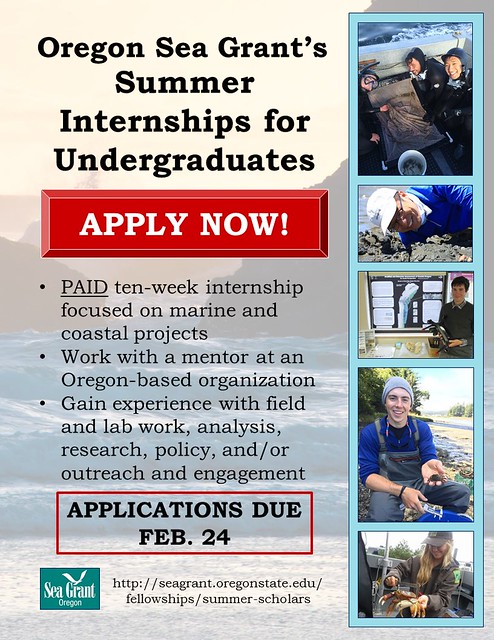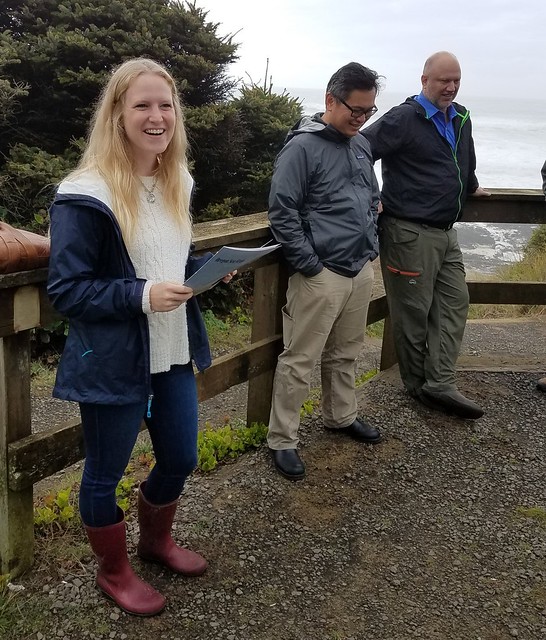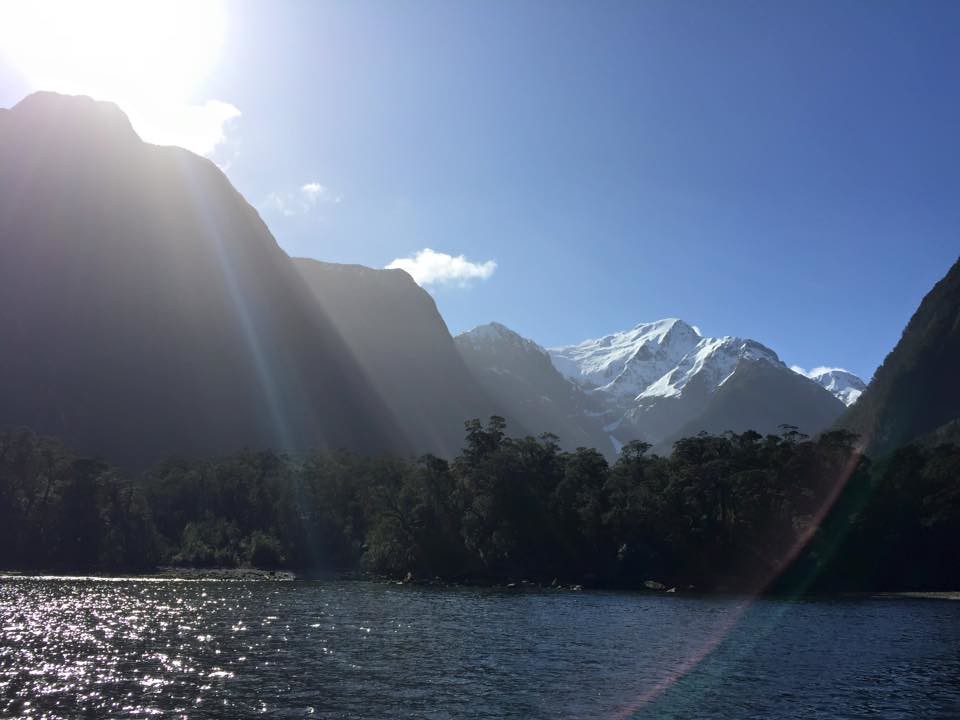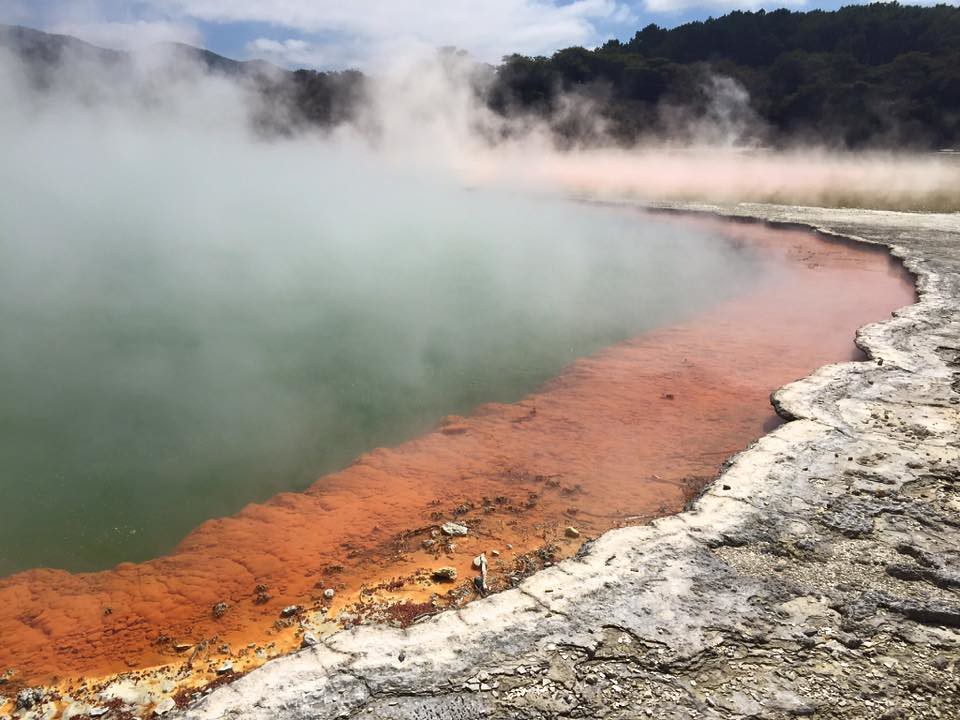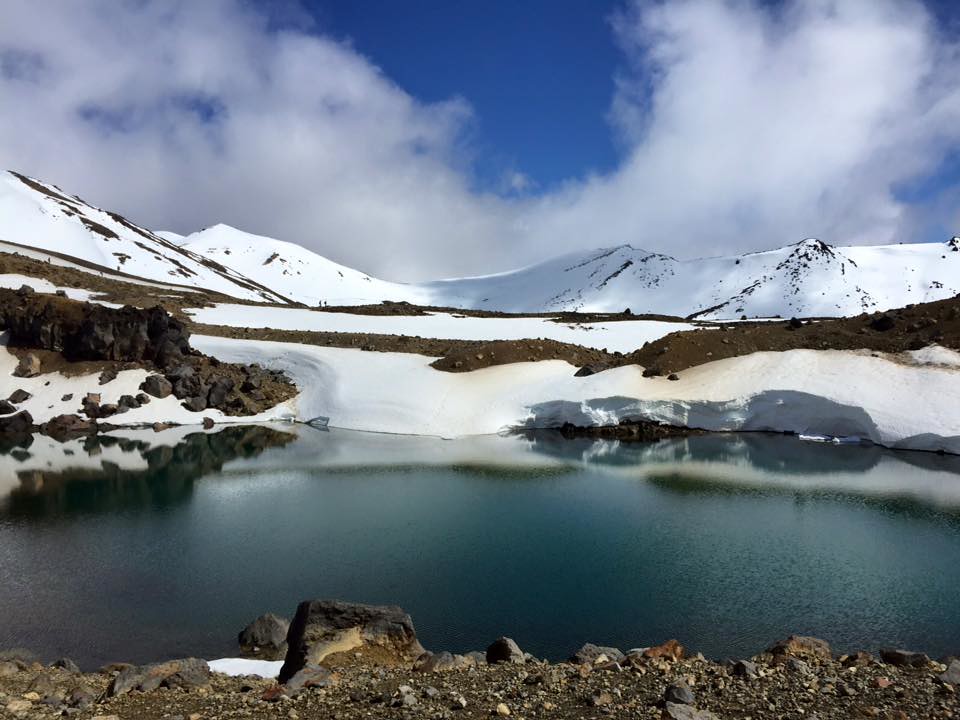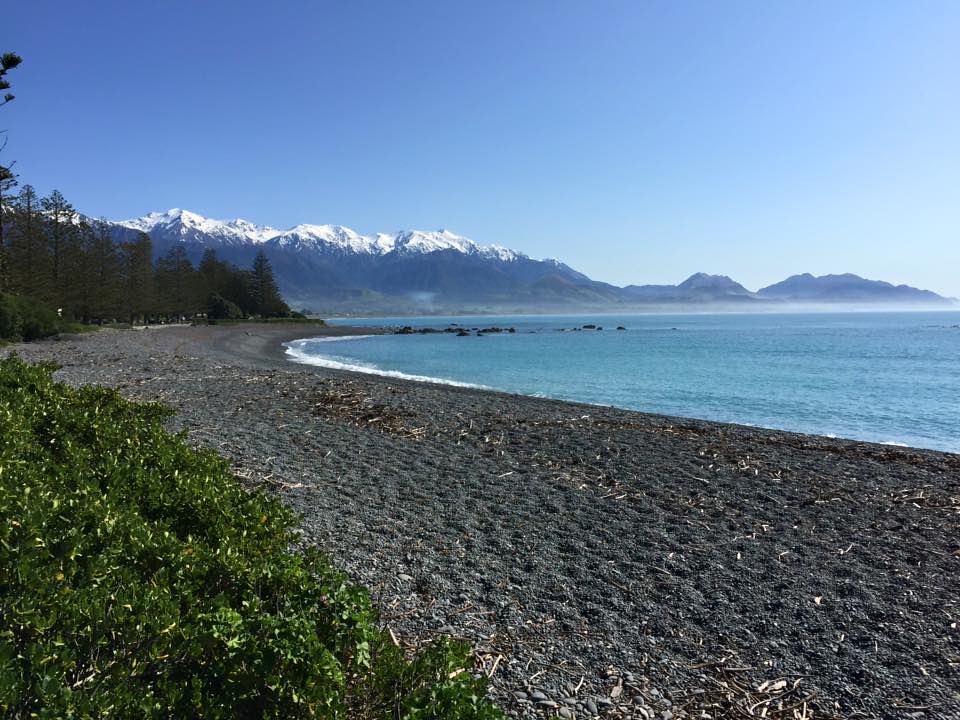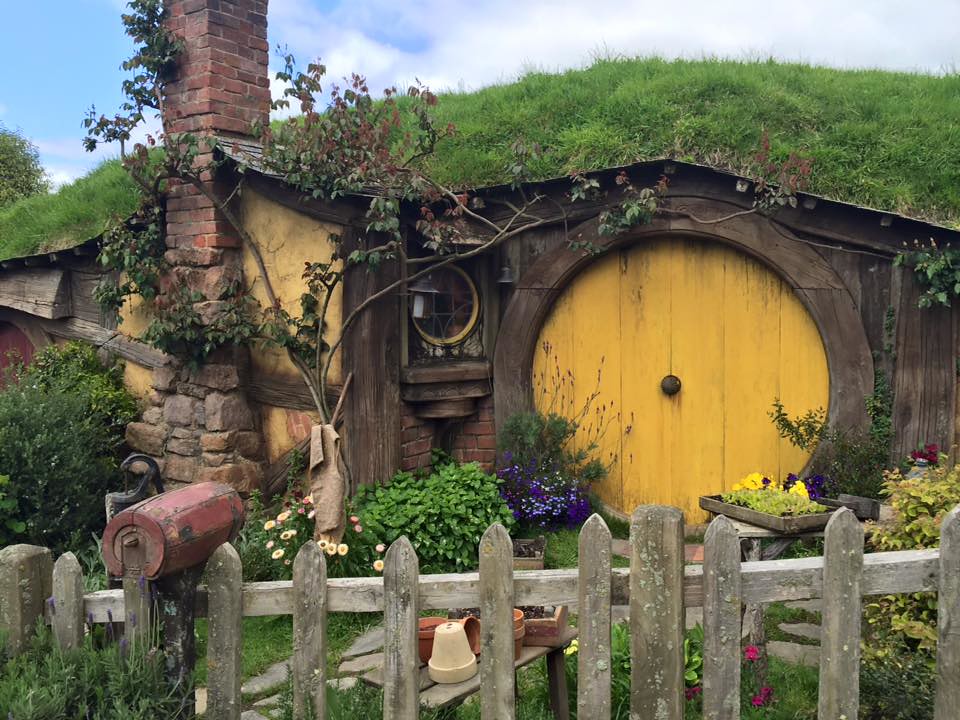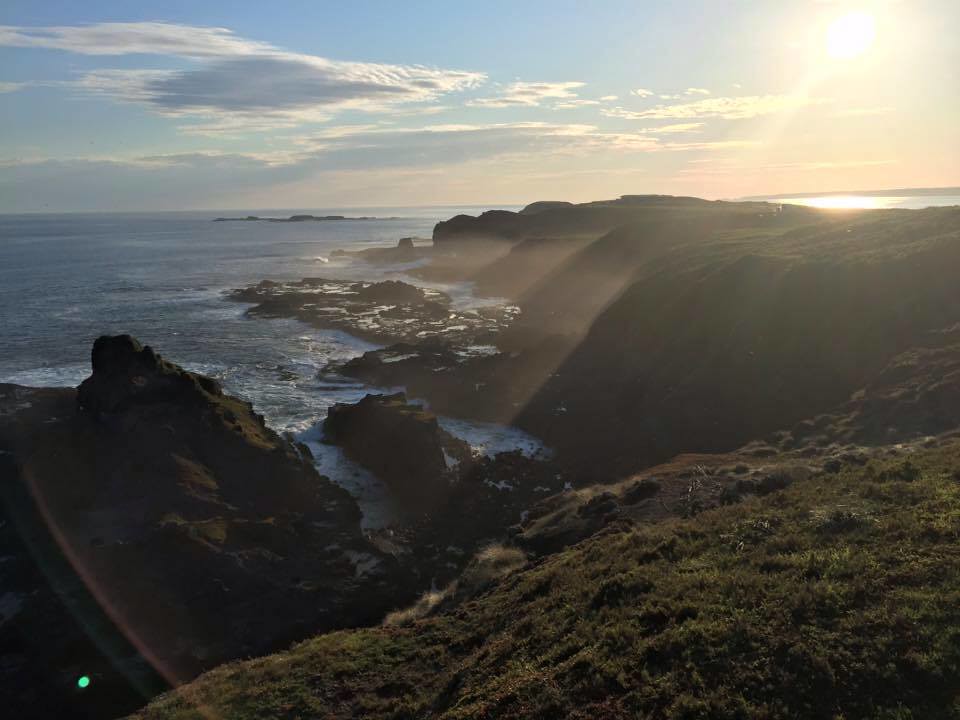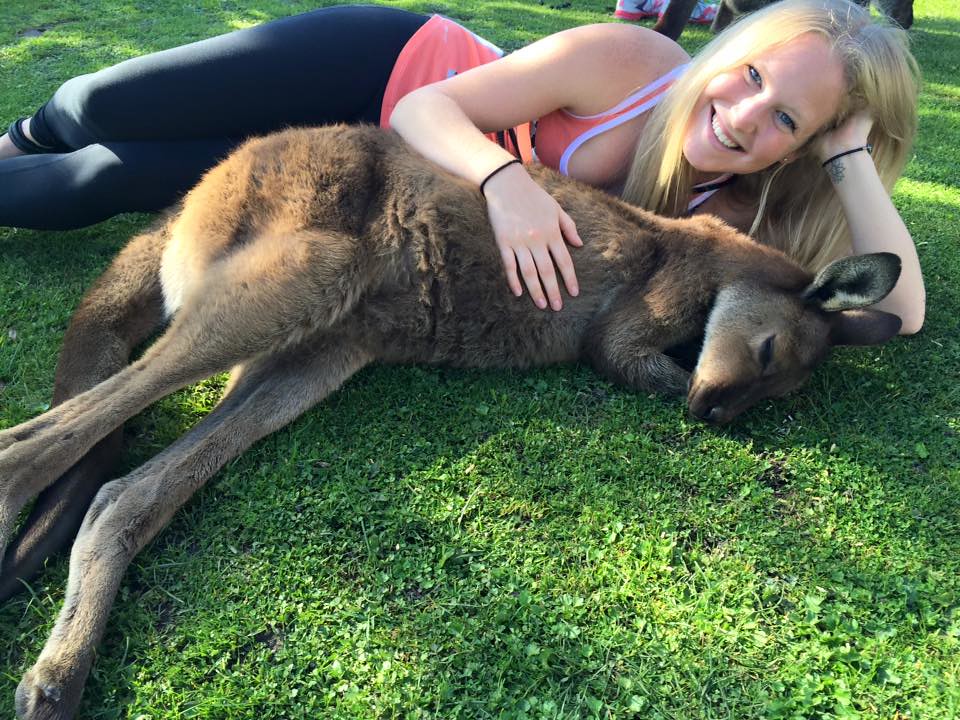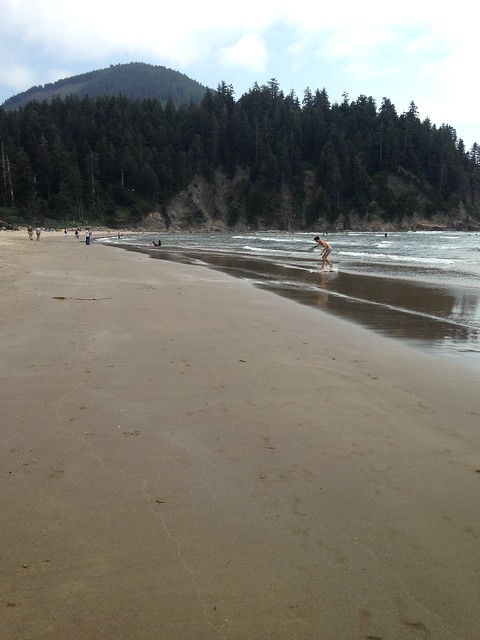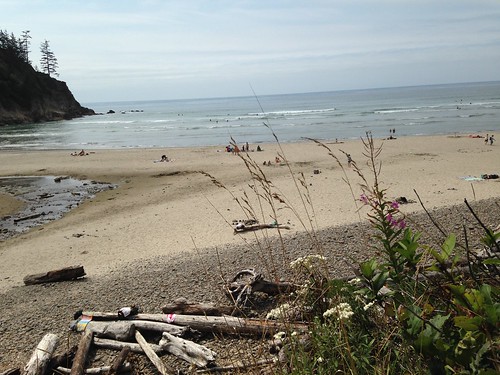Oregon Sea Grant is excited to welcome our ten outstanding Summer Scholars this coming June! After receiving a record high of 152 applicants, the Oregon Sea Grant review committee went through a thorough process to select ten truly remarkable undergraduates. The Scholars will be working on a variety of social and natural science projects from monitoring the invasive green crab to assessing market prices of experiential tourism to communicating marine reserves research to the public. We are excited to be partnering with a fantastic crew of hosts including the Oregon Department of Fish and Wildlife, Environmental Protection Agency, South Slough National Estuarine Research Reserve, Department of Land Conservation and Development, Wild Rivers Coast Alliance, U.S. Department of Agriculture, and Oregon Sea Grant. The Scholars will be frequently posting on the blog about their work and experience on the Oregon coast throughout the summer, so remember to check back in! More information about the Scholars, including their placements, will be posted on our Meet the Scholars webpage in the coming weeks.
Author Archives: Haley
Application season for the Summer Scholars Program!
With the close of 2016 the Research and Scholars Team at Oregon Sea Grant are now beginning to ramp up for the 2017 Summer Scholars Program. Host applications are due this week and student applications are due next month on February 24th. Spring is always a busy time of year for the Scholars program as we review applications, interview candidates, and place successful applicants with host organizations. In 2016 we received nearly 150 applications, and with our increase in advertising to reach a broader audience, I suspect we will reach at least 200 applications this year. The caliber of applicants is always extremely high, and narrowing the applicants down to just ten Scholars is always extremely difficult and takes plenty of time and a team of diligent people.
Summer Scholars are outstanding undergraduate students or recent graduates from around the nation who come to Oregon to work under a mentor on a marine-related project. Scholars work on everything from analyzing fecal indicator bacteria in the Tillamook estuary to evaluating the impacts of lost crabbing gear to creating identification videos for tidepools. Ten students were placed last year in various positions and all blogged weekly throughout the summer. To find out more about the 2016 scholars experience and projects just scroll through this blog and you will encounter plenty of posts!
If you know of any students (or if you yourself are this student!) that would be interested in a paid summer internship on a coastal or marine project, please visit the Oregon Sea Grant Summer Scholars website.
A reflection over the past year
In the summer of 2015 I was fortunate to participate in the Oregon Sea Grant Summer Scholars Program. Having just graduated from Oregon State University the weekend before the internship started, I was uncertain as to my next steps in the real world. For the first time in my life I was out of the education system. I had no plans for after the Summer Scholars Program ended in August, besides some personal travel. I had no idea how big of an impact this program was going to end up having on the next two years of my life.
I was placed with the Oregon Department of Fish and Wildlife’s (ODFW) Marine Reserves Program in Newport, Oregon. Going from living in the Willamette Valley my whole life to living on the Oregon coast for a summer was a huge change. Where were my ninety degree days floating down the river? The change in weather wasn’t the only big change though. My position was focused on the human dimensions side of the marine reserves, and I was paired up with the ‘lone social scientist’ of the organization, Tommy Swearingen. Social science was a completely foreign topic to me coming from a strict biology background, and I was nervous about how the summer would go. How was I supposed to conduct research and write reports on a field of study I knew next to nothing about? Luckily I had a fantastic mentor that took the time to teach me everything I needed to know (and more at times). It is easily apparent by his genuine interest in my education that Tommy used to be a college professor.
Well I somehow made it through that summer (I went with a fake-it-till-you-make-it approach) and my position as a Summer Scholar turned into a position as a part-time research assistant for the Marine Reserves Program. I also ended up landing a job with Oregon Sea Grant (OSG) part-time as the Summer Scholars Liaison, effectively managing the program that I just came out of. My positions’ titles and roles have changed and expanded as the time I’ve spent in these jobs has progressed. At OSG I’ve gained experience with multiple fellowships, facilitating grant review, planning events, and participating in many professional development workshops. At ODFW I have mentored an intern, been an author on many agency reports, taken the lead on a study from idea formulation to report completion, and presented our work at multiple events.
The last meeting with the 2016 Summer Scholars cohort following the Final Symposium at Hatfield Marine Science Center.
Going into the Summer Scholars Program in June of 2015, I had no idea the connections I would make would result in two fantastic jobs with respected organizations. The experience and skills I have gained make me feel more prepared and confident when applying for future positions. Currently I am looking into finding a Master’s graduate program to start in the fall of 2017. I’m generally interested in studying mammals, amphibians, or reptile habitat use and how this use changes as a result of climate change and human influence. (Email me if you have any school or professor recommendations!) While my time with OSG and ODFW has been invaluable, and I know I’ll be sad to go when the time comes, I’m itching to get back to my biology roots and do some field work. Whether that comes in the form of graduate school or a research technician position, I don’t yet know, but I’m excited to find out!
Presenting on the 2016 ODFW visitor intercept study at the OSG Program-Wide Meeting in Yachats.
Diversity in the workforce – why should we care?
This past Tuesday I was confronted with a shocking sexist letter directed at a woman applying to the College of Forestry in 1957. The woman was blatantly told that she could not enroll in the College of Forestry because the social constructs of the time would not allow it. The forestry jobs post college are only suitable for male employees, field trips for the college require sharing sleeping quarters, which would “pose a definite problem as far as a girl is concerned”, and a woman would not be able to fulfill the internship requirement because no forestry organization would hire her. Yikes. The culprit college behind this letter? Oregon State University. Fortunately the College of Forestry has come a long way since 1957. In 2015, 142 men graduated from the College of Forestry as well as 91 women, from 0% female graduates to 39%, a significant improvement.
This letter was brought to my attention during a search advocate training workshop I am taking this week put on by Anne Gillies, the Associate Director of Affirmative Action and Advancement in the Office of Equal Opportunity and Access at OSU (what a mouthful!). Working in the research and scholars department at Oregon Sea Grant puts me directly in the process of requesting and reviewing applications, and therefore I figured I should know how to navigate this process in a fair and equitable manner. While I certainly do not purposefully attempt to introduce any bias into this process, I am also aware that many employers believe that they are conducting a just search such as I do, and yet there is still a stunning lack of diversity in many STEM fields. Now why is that? Due to this vast discrepancy, I, and the rest of the research and scholars team, am taking action to ensure we are aware of potential biases and how to avoid them.
Focusing on increasing diversity in applicants applying for and selected for OSG fellowships is necessary seeing as there is very little diversity currently in the fisheries field. A fellowship with OSG gives fellows unique opportunities to network and expand their skill sets, as well as provides a competitive edge for their resume when applying to future jobs. Therefore, it is reasonable to assume that OSG fellows may have an advantage when applying for some fisheries positions. A study conducted by Arismendi and Penaluna in 2016 found that women and racial/ethnic minorities are sorely underrepresented in fisheries science both in higher education institutions and in federal employment. Despite the fact that slightly more (52%) women are earning PhDs in biological science, the majority (74%) of federal fisheries scientists/managers are male, and over 70% of tenure-track faculty in fisheries are male. This study points out that there is not a lack of well qualified women and minorities in the fisheries field, however, these groups are not ending up being selected for the tenure-track faculty or federal positions. Clearly something needs to change.
Why should we focus on increasing diversity in the fisheries workforce? The main reason is that every individual, regardless of race, gender, sexual orientation, etc., deserves the same unearned privileges and opportunities. Another important reason is that diversity in general is actually beneficial to a workforce. “Previous research has shown that a diverse workforce generates new ideas, promotes innovation, leads to better problem-solving (Østergaard et al. 2011), enhances scientific productivity (Horta 2013), and increases the chances that the science will be high impact (Freeman and Huang 2015).” – Arismendi and Penaluna 2016. There is nothing to lose, and much to be gained, by incorporating diversity into the workforce. I look forward to entering into day two of the search advocate training workshop tomorrow and furthering my knowledge on this topic.
Summer is here! (finally)
It’s the first day of summer today, and with the sunshine came our ten new Summer Scholars! This past Monday, orientation at the Corvallis Sea Grant office was followed by a trip to Newport where eight of our scholars met their agency mentors and moved in to the Hatfield Marine Science Center (HMSC) dorms. On Tuesday, Sarah Kolesar, Mary Pleasant and I headed down to the south coast to drop off two more of our Scholars, Lexi and Collin. Lexi is stationed in Bandon working for the Wild Rivers Coast Alliance (WRCA), and Collin is living in Charleston and working for the South Slough National Estuarine Research Reserve (SSNERR). This was my first opportunity to visit these beautiful locations, and to be honest, I never wanted to leave! The South Slough Visitor Center is interactive, modern and well designed, which is coupled with an adventurous forest setting with winding trails throughout. The housing for SSNERR interns are yurts that sit up high in the forest overlooking the slough, which makes for a stunning view every day. In Bandon we saw the newly built WRCA offices that are located on the Bandon Dunes Golf Resort, which I found out is ranked number one for golf resorts in the nation! These offices are architecturally appealing with outdoor seating available that overlooks a small lake – a perfect place for lunch. Check out Lexi and Collin’s blogs for photos to see for yourself. We happened upon delightful, sunny weather, which always makes the coast seem ten times more breathtaking in my opinion. We also encountered some delicious food at Shark Bites restaurant in Coos Bay – I highly recommend the Dungeness crab eggs benedict!
As summer continues we are gearing up for expectations meetings with our scholars and host agencies, as well as the much anticipated mid-summer check in and camping trip! We will be heading to Trout Creek Campground, which is about an hour from Corvallis, to spend some time exploring more sections of Oregon. Seeing as none of our Scholars are Oregonians this year, we encourage them to make the most of their summer in Oregon and adventure as much as possible. There’s no place more amazing than the Pacific Northwest in the summer months – warm days, plenty of lakes and rivers, flowers and trees all around, mountains to hike or even ski, well you get the idea! I’m kept plenty busy between my two jobs at Oregon Sea Grant (OSG) and Oregon Department of Fish and Wildlife (ODFW), but I am certainly making time for camping and hiking in these next months. Even as a native Oregonian, there are still plenty of places I haven’t yet discovered. If anyone has any suggestions please let me know!
The beginning of life after school
After being in school for the past 22 years I am finally out! Well, out for now at least. Who knows when grad school will pop into the picture? After my Summer Scholars experience last summer adulthood began with a two month trip to Australia and New Zealand. Rough, right? These countries are absolutely stunning. I could fill this entire page with pictures from that trip, as I have thousands, however, I will just share a few with you today.
Meeting my first kanga in Australia!
It appears I ended up sharing a few more photos than I originally intended, but it’s too difficult to narrow them down!
After the vacation of a life time, I returned to Oregon and began working part-time for the Oregon Department of Fish and Wildlife (ODFW) and part-time for Oregon Sea Grant (OSG). I am continuing the position I had as a Summer Scholar with ODFW last summer with Marine Reserves Human Dimensions under my mentor Tommy Swearingen. For this position I data mine through literature and write reports for ODFW largely focusing on Oregon coastal communities. I am also employed through OSG as the Summer Scholars Liaison. This has been a fascinating opportunity to experience the program from the other side and learn more about OSG’s inner workings. I can’t give anything away, but I can promise that we will have some fantastic 2016 Summer Scholars from the applications we have received!
Have you been convinced to visit yet?
As I have said in so many of my posts, Oswald West State Park, basically my second office here, is absolutely gorgeous. In case I haven’t convinced you to come here and hike Cape Falcon or surf at Short Sand Beach, I have even more pictures of it that I think should do the trick. Oswald West is a unique place where the forest and cliffs go right up the edge of the ocean, which makes for great hiking views.
This is a picture from the half mile hike it takes to get from the parking lot down to Short Sand Beach, where we hand out visitor surveys.
Here I am chilling in my office! This is where we stand and ask people to fill out surveys as they are heading down to the beach. All of trees at Oswald West are super different and neat. This intriguing tree is climbed by dozens of kids and adults everyday as it has such a gradual slope.
Here’s where the stream that flows through the forest comes out and flows into the ocean!
Early morning tidepooling! There are amazing tidepools at Short Sand. When the tide is low you can actually walk into deep caves full of starfish and other interesting critters.
Nearing the end of a great experience!
The OSG summer scholars were able to present their research in a PowerPoint presentation and poster session this past Friday at Hatfield. Scholars, OSG staff, mentors, REU students and other Hatfield staff came to learn about our work and ask questions. It was a rewarding experience to be able to share what I’ve been working so hard on all summer to my coworkers and peers. Creating a poster and presentation was also great practice in presenting scientific work to the community.
As we wrap up these last couple weeks I have been spending a lot of time doing research at Oswald West State Park. We are trying to get in the last of our surveys and observations. There have been some rainy days, but also some beautiful, sunny ones as well! I have been taking some pictures (mainly on the nice days) while we eat lunch, so here they are!
View of the future Cape Falcon Marine Reserve.
Teenager skim boarding at Short Sand Beach in Oswald West State Park (adjacent to where the future Cape Falcon Marine Reserve will be in January 2016!)
Doing visitor observation counts at Short Sand Beach.
A giant jellyfish I found! Not sure what is exactly is going on with this jelly, like if it’s a bunch of jellies connected or what, but it was huge and squishy!
Fishing Observations
This summer I have been working on quite a few projects with my grad student accomplice, Theo. They’ve all been based around Cape Falcon Marine Reserve, which will be implemented January 1st, 2016. It is the fifth, and last, and furthest north, marine reserve to go in along the Oregon coast. Most of the reserve is adjacent to Oswald West State Park, so that is where we do the majority of our research. Local community members and stakeholders were involved in deciding where they wanted the marine reserves to be placed. As the reserves mean no extractive purposes (i.e. fishing, shellfishing, etc.) or ocean development, fishermen wanted the marine reserves to be in places that would not significantly, negatively effect their fishing livelihoods. The Cape Falcon Marine Reserve is located in a portion of the ocean that is not heavily fished currently, however, there is still some fishing occurring within the future reserve (which is still completely legal as it does not become prohibited until January 1, 2016). To gather information on exactly how much fishing is occurring in this area, Theo and I have been conducting fishing pressure observation counts. We go to different locations along the coast to acquire the best views of the reserve in its entirety. At each viewpoint we count the number of buoys and boats we can see using binoculars, including any identification tips for the boats and buoys, such as name and color. Additionally, we record conditions of the environment such as sea conditions and weather conditions, as those will effect our abilities to accurately see all boats and buoys in the water. It’s amazing how you can see next to nothing without binoculars, and then you start using them and suddenly you can see dozens of buoys and a handful of boats! This project has been great practice for me at using binoculars and identifying boat types.
Exploregon
Even though I am a born and raised Oregonian, I still have plenty to explore in this beautiful state! I’ve been taking advantage of days off by adventuring around and I thought I’d share a few places I’ve been in this blog post in case anyone else is feeling up to a little weekend adventure.
Pictured here is Little Crater Lake. This is a hidden gem that my mentor at ODFW, Tommy, stumbled upon and told me about. This is located up by Mt. Hood. the water is super clear as you can see in the photo. Check out that tree you can see so clearly in the lake! Water temperatures here are about 34 degrees, so not ideal for long swims, but beautiful to look at!
Here’s the view of the Sisters Mountains from a chair lift at Mt. Bachelor. Bachelor is awesome for snow sports in the winter, but it’s still absolutely stunning and tons of fun in the summer. There’s plenty of mountain biking trails on the mountain. When I went up we did a summer dogsled ride that was tons of fun! Also, the restaurant is still open in the summer (which you take a chair lift up to); be sure to make nighttime reservations as it’s unbelievably beautiful at night!
This is Steelhead Falls, which is part of the Deschutes River. There are plenty of places to do some cliff jumping into the water around here. When we went there were kayakers practicing going down the waterfall and then rolling back over when they flipped. Super beautiful spot, not too crowded and also pretty dang cold water, though not as cold as Little Crater Lake.
This is Smith Rock during sunrise. Smith Rock is a popular destination in Central Oregon. I would certainly recommend a visit to hike here, just make sure to bring lots of water as there is little to no shade and temperatures rise quickly in the summer! This is also a good place for rock climbing if anyone is interested in that!
Anyways, I just wanted to share a few spots I’ve been around Oregon lately in case anyone else wants to go exploring, though it’s difficult to leave Newport on the weekends because it’s such a beautiful beach!

